Assessing the Value of Silver Certificate Dollar Bills
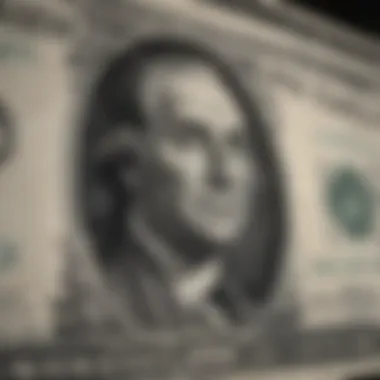
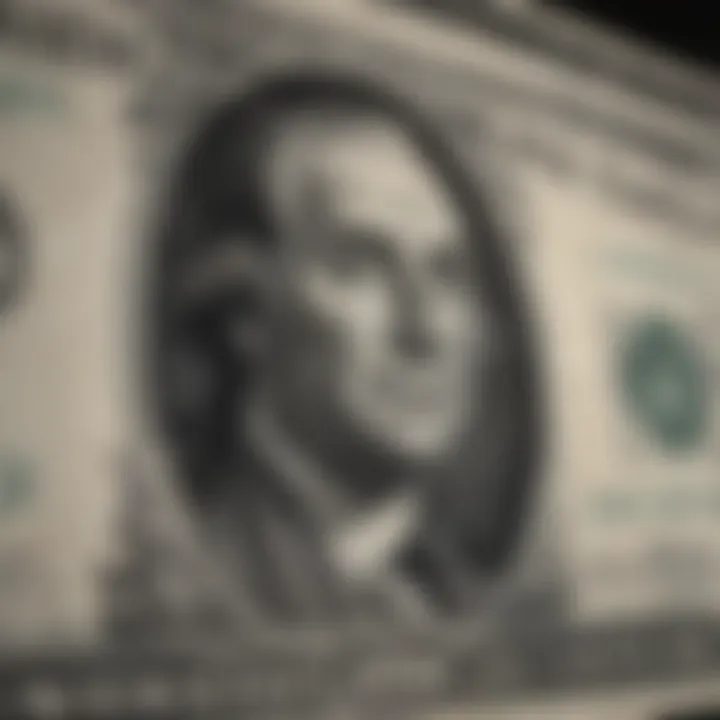
Intro
When it comes to understanding the world of currency collection, silver certificate dollar bills hold a unique place in both the hearts of collectors and the annals of economic history. These paper notes, once backed by physical silver, have now transitioned into a nuanced sector of the collectibles market. Their worth is not just measured in dollars and cents; it entwines historical significance, rarity, and current market trends.
Evaluating the value of silver certificates requires delving into various layers of information—more than just looking at a simple price tag. Whether you’re a seasoned collector or merely curious about the potential of these bills as an investment, the knowledge you gain will be indispensable. This article will navigate through the essential elements you need to understand their value, touching upon historical aspects, types of certificates, market demands, and even the common misconceptions that often cloud judgment.
In the age of digital currencies and swift transactions, the allure of tangible assets such as silver certificates grows stronger. This guide will equip you with the necessary tools to not only appreciate their artistic and historical value but also to make informed decisions when evaluating their market worth.
Preamble to Silver Certificates
When one thinks about the value of currency in terms of collectibles, silver certificates stand out like a shiny penny on a busy street. Understanding these unique dollar bills is vital for collectors, investors, and even casual history enthusiasts who seek to grasp their significance. Their allure isn’t merely in their metallic name; it stretches across history, economics, and culture, contributing layers to their valuation.
Historical Context
Silver certificates made their debut in the late 1800s, a time when the United States explored various avenues to stabilize its economy. These notes were originally a promise by the government to pay the bearer a specific amount of silver. In essence, they connected paper currency directly to tangible silver reserves. Imagine holding a bill that was a ticket to real metal; that was the reality back then.
The practice stemmed from the need to alleviate some of the issues associated with the gold standard. They provided an alternative that allowed Americans to participate in the financial ecosystem without the burden of carrying heavy coins in their pockets. The transition from gold to a silver standard—at least partially—reflected the socio-economic climate of the era. By issuing these certificates, the government attempted to instill confidence in the economy.
Notably, the era of these certificates reflected the unique challenges of the times, including fluctuating metal values and the ever-changing political landscapes. As the years rolled on and financial practices morphed, silver certificates became a fascinating relic of a bygone chapter in American history. Today, their monetary worth can fluctuate based on various factors, all reflecting a blend of nostalgia and market trends.
Understanding the Currency
Diving into what silver certificates are requires grasping both their mechanical and sentimental value. These notes, primarily issued in denominations of one, five, and ten dollars, carry blue or green seals—each signaling different historical contexts and editions. The basic idea was simple: a dollar bill could essentially be exchanged for a dollar’s worth of silver. However, this connection faded over time as the currency evolved.
With the passage of the Silver Purchase Act of 1934, the U.S. government shifted its stance on backing currency with precious metals. As a result, these once-promising certificates transformed into collectibles, with values rising or plummeting based on rarity, condition, and demand. While one might still be able to spend these notes for goods, their true value often lies in their collectibility rather than their face value.
In short, understanding silver certificates is a journey through both time and finance. The notes serve as an interface between fiscal policy and historical memory, appealing not just to investors but to anyone intrigued by how currency shapes society.
Types of Silver Certificate Dollar Bills
In the world of numismatics, understanding the different types of silver certificate dollar bills is fundamental for both collectors and investors. Each type carries its own history, significance, and market dynamics. Identifying these variations not only aids in valuation but also enhances the overall collecting experience. Let’s explore the notable types: the Blue Seal Silver Certificates, the Silver Certificate Notes with Green Seals, and the various series that tell the tale of American economic history.
Blue Seal Silver Certificates
Blue Seal Silver Certificates, issued primarily between 1878 and 1964, are perhaps the most recognized variety. With a distinct blue seal which stands out against the more common green seal notes, these certificates were established to represent a claim to silver on deposit in the U.S. Treasury. One key characteristic of the Blue Seal Silver Certificates is their connection to the concept of backing currency with a tangible asset, which brings a layer of trust in their value. Collectors often prize these notes not just for their aesthetic appeal, but for the piece of history they represent. Their value can fluctuate based on condition and demand, but they certainly hold a sentimental spot in the hearts of many.
Silver Certificate Notes with Green Seals
The Silver Certificate Notes with Green Seals took a different route. These notes typically date from 1891 to 1957 and share similar features to other U.S. currency, yet they carry the unique promise of being redeemable for silver. Notably, collectors often cite their ease of access and relatively lower prices compared to their Blue Seal counterparts as a major draw. However, this can sometimes lead to a perception that these notes are less desirable, when, in fact, their historical relevance remains significant. In fact, some examples can fetch substantial sums at auction, depending on the rarity and the condition of the note.
The Different Series of Silver Certificates
The various series of Silver Certificates are pivotal in understanding the evolution of American currency. Each series reflects the economic climate of its time and showcases advancements in printing techniques and artistic design.
Series of
The Series of 1896 is often regarded as one of the most beautiful series ever issued. These notes showcase intricate designs and vivid colors - the images often allude to themes of liberty and the agricultural richness of the nation. This series is popular among collectors because of its artistic merit and historical context, making it a favorable choice for those looking to own a piece of American heritage. A unique feature here is the incorporation of the allegorical figures, such as the depiction of a female figure representing "History", which adds charm. However, due to their age and the print runs, finding a well-preserved example can be quite challenging, which significantly affects value.
Series of
Moving forward, the Series of 1923 presents a more straightforward design, yet it holds great significance. This series came at a time when there was a shift in currency production techniques and serves as a bridge between earlier designs and the more modern approaches adopted afterward. The key characteristic of the 1923 series is its simplicity and the large size of the notes, which appeals to collectors who appreciate historical aspects over artistic complexity. Because these were in circulation for a shorter time frame, they can sometimes be found in better condition than older series, thus providing an advantage to collectors aiming for authenticated high-grade notes.
Modern Variants
Finally, the modern variants of silver certificates, while less common, still bear relevance. Issued primarily in the later parts of the 20th century and into the 21st, these notes often see varying degrees of acceptance among collectors. Their designs draw from the classic elements of earlier series, yet many collectors debate their collectibility due to their relatively recent production. However, their unique features often include security enhancements and updated minting technology, making them intriguing. While they may not have the same historical weight as earlier certificates, they provide an interesting look into the modernization of American currency and can still have investment potential.
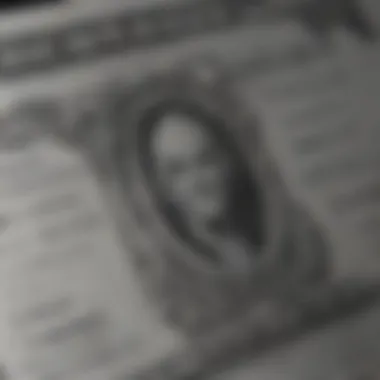

In the realm of investing, knowledge of these different types is essential. In understanding their unique backgrounds, you stand a better chance at making an informed investment decision.
Factors Influencing the Value of Silver Certificates
Evaluating the worth of silver certificates is not a straightforward task. There are various factors that can sway the value significantly, and understanding these elements is crucial for collectors and investors alike. From the physical condition of the bill to its rarity and the demand in the market, each aspect has its own implications on valuation. Taking a closer look at these factors not only helps in accurate assessment but also may guide one’s buying and selling strategies in this niche market.
Condition and Grading
When talking about the worth of silver certificates, the condition is paramount. It's like assessing the quality of an old wine; the older it is, the more its condition can tell about its worth. In numismatics, bill condition is usually graded on a scale ranging from "Good" to "Uncirculated". Here’s how different grades can affect value:
- Uncirculated: Bills in this condition show no signs of wear. They are crisp, clean, and fresh. This grade can drive the price through the roof, especially for rare notes.
- Fine: These notes might have some slight folds and may show wear but retain overall clarity. They are still collectible but won’t fetch the same price as Uncirculated bills.
- Poor: This refers to severely damaged notes with tears, stains, or significant fading. While they can hold some historical value, monetary worth drops.
Visual inspection often does not suffice. Having a professional grading service, like the Professional Coin Grading Service (PCGS), evaluate the certificate can sometimes make all the difference in a sale.
Rarity and Demand
Another vital aspect to consider is the rarity and demand for specific silver certificates. It's a classic case of supply and demand at work. The fewer a silver certificate is in circulation, the higher the price may go—assuming, of course, that a subset of collectors is hunting for it. A few elements that amplify rarity include:
- Low Production Numbers: Certain series or particular years had a much lower print rate than others. For example, a rare Series of 1896 certificate might entice collectors far more than a readily available Series of 1923.
- Population Reports: Investors often refer to population reports, which document how many of each grade are known to exist. A low population report typically raises both the item’s desirability and its asking price.
Conversely, even if a note has historical significance, it can be less valuable if too many are available in the marketplace, making scarcity a fundamental aspect in its evaluation.
Historical Significance
Lastly, there's the historical significance tied to certain silver certificates. The story behind a bill can be just as important as its physical state. Papers that are directly connected to crucial events—like those issued during times of economic upheaval or notable transitions in U.S. currency policy—hold a special allure. A few noteworthy points include:
- Cultural Impact: Bills that depict notable figures or moments can capture the public's imagination, adding an intangible layer to their worth.
- Connection to Major Events: Some silver certificates were issued during significant financial crises; for instance, the 1923 series was close to the era of the Great Depression. This connection to a major historical moment often draws collectors interested in that era.
- Artistic Features: Many series are celebrated for their artistic designs. This aesthetic appreciation can influence demand and, subsequently, the value of these notes.
"A collector's item is more than just a number on the price tag; it’s a piece of history waiting to be appreciated by the discerning eye."
The collective weight of condition, rarity, demand, and historical significance paints a fuller picture when determining the value of silver certificates. For any investor or collector, grasping these factors is essential to navigating this fascinating segment of the numismatic world.
Market Trends for Silver Certificates
Understanding the market trends surrounding silver certificates is crucial for any collector or investor. These trends reflect shifts in demand, interest levels, and pricing, ultimately guiding decisions to buy, sell, or hold these distinctive pieces of currency. With the growing interest in retro and collectible items, silver certificates have carved a niche in the world of numismatics, where not just the money's face value matters, but also its story, condition, and rarity.
Emphasizing the importance of staying informed, one can say that timing in this market is everything. Seeing when buyers are most active or when certain types of certificates fetch higher prices can mean the difference between a savvy investment and a rushed purchase. Here's a breakdown of key elements to consider when analyzing market trends for silver certificates:
- Historical Sales Data: Tracking past auction results or sales can paint a picture of what specific certificates are currently worth. Knowledge of price trends over the last few years, especially during economic fluctuations, can also provide insight into future pricing.
- Collector Interest: Just as fads come and go, the interest in particular types of currency ebbs. Understanding what collectors are currently seeking can help potential sellers or buyers make informed choices。
- Market Saturation: A sudden influx of similar certificates for sale can impact prices negatively. Conversely, if the market seems to lack specific types of certificates, values may trend upward.
Current Market Analysis
At present, the market for silver certificates shows a curious mixture of stability and fluctuation. While the numismatic community values these certificates, the overall economic climate can sway their desirability. Silver certificates from the more historical series, especially the Series of 1896 or Series of 1923, often attract premium prices due to their age and distinct designs.
When analyzing the current market:
- Context of Supply and Demand: Increased interest during economic uncertainty often boosts the appeal of silver certificates as alternative investments. Many holders of liquid cash or those wary of stock market volatility may seek out stable, tangible assets.
- Online Platforms: Retailers such as eBay or specialized numismatic websites have made it easier to buy and sell directly. This accessibility can also create volatility, as multiple sellers may offer similar items that can sometimes drive prices down.
- Collector Communities: Engaging with online forums or social media groups like those found on Reddit or Facebook can provide real-time updates on what collectors are pursuing and how much they are willing to pay. Members often share insights on what pieces are hot commodities and which might sit unsold for months.
"Taking the pulse of the community can illuminate unexpected trends and valuations that other collectors may overlook."
Investment Trends
Investment trends in silver certificates reflect broader shifts towards collectibles as a form of diversification within portfolios. Investors are beginning to recognize the potential for growth in this niche, similar to how vintage wines or fine art has been treated. Recent trends show a steady increase in investors looking at collectibles not only for their nostalgic value but also for investment stability.
Factors influencing these trends include:
- Long-Term Appreciation: Investors increasingly see silver certificates as assets that offer potential long-term gains, especially as they become rarer in circulation.
- Diversification Strategy: Many savvy investors are looking to diversify their portfolios. By incorporating silver certificates, they are buoying their financial strategy with assets less affected by standard market fluctuations.
- Interest in Value Preservation: As inflation concerns rise, tangible assets like silver certificates become more attractive for preserving value. They can serve as a hedge against inflation, contrasting sharply with the more volatile stock market.
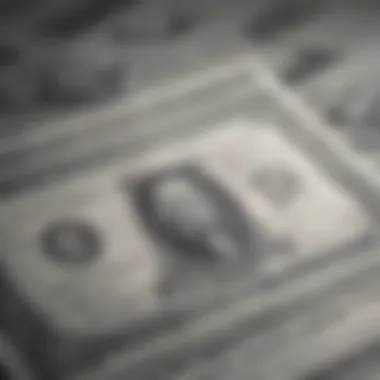
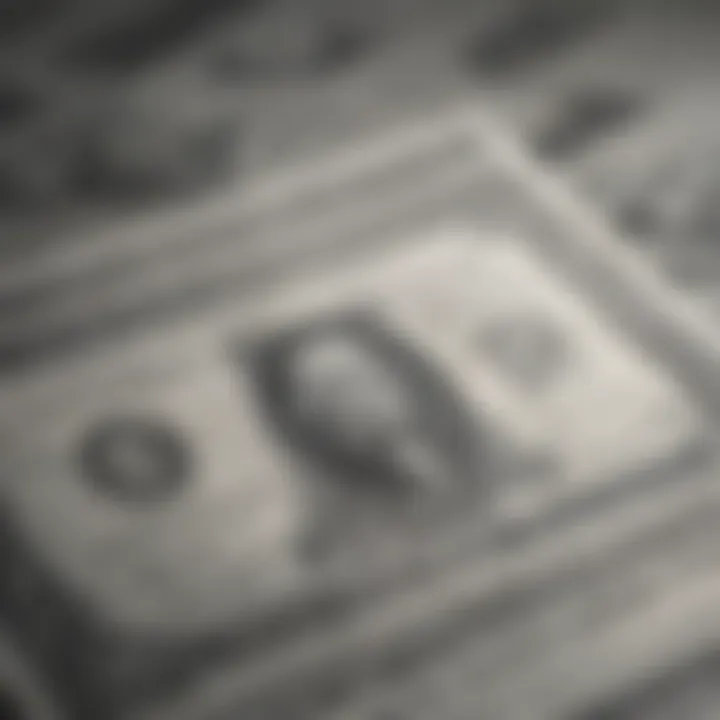
Common Misconceptions About Silver Certificates
Understanding the common misconceptions surrounding silver certificates is crucial for collectors and investors alike. These myths can significantly impact not just how one perceives the value of these certificates, but how they approach buying, selling, or even collecting them.
Firstly, many believe that since silver certificates were backed by silver reserves, they are equivalent to having actual silver. This is a misunderstanding that leads to a range of misinformation about their potential intrinsic value. Such beliefs might entice new collectors thinking they hold a piece of silver worth its face value, which, in truth, is rarely the case when considered in the context of today's market.
Moreover, there is often an assumption that all silver certificates are collectibles. While many still have value among collectors, not every certificate can boast significant worth. The condition and rarity of individual notes can vary considerably, leading to a situation where some certificates are practically valueless despite their historical significance. Being educated about what makes a silver certificates collectible versus merely a historical remnant is essential.
Finally, there’s a persistent notion that silver certificates can still be spent as currency. Although technically they are still legal tender, many won’t accept them at face value, as their true worth is often greater in collections and auctions than in general circulation.
All these misconceptions can cloud judgment, turning potentially savvy investments into missed opportunities.
Understanding Collectibility versus Usability
When discussing silver certificates, it is vital to separate collectibility from usability. Collectors often view these certificates as historical artifacts or art forms, while others see them merely as tools to conduct transactions.
The collectibility of silver certificates stems from factors including their age, rarity, and condition. Items such as the Series of 1896 are prized not just for their design but also for their limited numbers. In contrast, the more common Series of 1923 doesn’t command the same respect within the collector community. Notably, a well-preserved 1896 certificate can fetch thousands, whereas a worn Series of 1923 may only bring a fraction of the value.
Usability, on the other hand, points toward the actual functionality of the notes. While you can technically use these certificates in transactions, most businesses today prefer more current forms of payment. This divergence creates a situation where many hold onto their silver certificates not for spending, but for preserving a piece of history.
Analyzing the Myth of Intrinsic Value
The concept of intrinsic value plays a critical role in the discussion of silver certificates. Many individuals mistakenly equate the stipulated value of a silver certificate, often $1, with a direct equivalency to its worth in precious metal. However, this perspective fails to consider the context of currency collection.
The intrinsic value, in terms of the dollars backed by silver, does not translate simply to the face value of the certificates in today’s market. The reality is that the market for silver certificates is driven more by collector demand and historical significance than by any intrinsic value anchored to silver reserves.
In many cases, a collector may pay more for a note based on sentiments or nostalgia than for the metal actually backing that note. Hence, prices can vary immensely depending on current trends and collector interest, which often fluctuate over time. What’s intrinsic to one collector may be completely arbitrary to another, creating a polarizing marketplace.
Added to this, the tangible market might show favor towards other investment avenues such as coins or gold, resulting in further fluctuations in prices of silver certificates. It's vital for anyone dealing with these bills to recognize that their value may not always align closely with the metal they were once printed to represent.
"The value of silver certifications pulses with the heartbeat of collector interest, rather than solely resting on the silver it used to symbolize."
Therefore, understanding these misconceptions helps in creating a balanced viewpoint for anyone interested in evaluating the true worth of silver certificate dollar bills. By untangling these myths, collectors and investors can make more informed decisions.
Assessing the Value of Your Silver Certificate
When it comes to silver certificates, knowing their value isn’t just an academic exercise; it can mean a good chunk of change for collectors or investors alike. These notes carry not only a promise of silver backing but also hold historical value that can fluctuate based on market trends and the condition of individual notes. Whether you possess a Blue Seal or Green Seal variant, assessing their value accurately is crucial for any potential transactions, be it buying, selling, or even simply insuring your collection.
Steps for Proper Valuation
Research and Documentation
Research and documentation stand as the bedrock of proper valuation. This step ensures you’re equipped with detailed knowledge about your silver certificate's specifics—type, series, condition, and market context. Start by cataloging your items; meticulous records can help in comparing notes among similar collectibles.
It’s essential to understand that thorough documentation not only showcases the provenance of your silver certificate but also aids in negotiations when dealing with collectors or dealers. Collectively, well-organized research allows you to grasp the current market landscape, ensuring you are not blindsided by inflated valuations.
One unique feature of thorough research is that it opens pathways to specialized literature or communities. Books, articles, and even forums like reddit.com provide insight that might not be easily found in standard valuations. However, pitfalls exist. Inaccurate information from non-reliable sources can lead you awry. Thus, navigating the research landscape with caution is advisable.
Consulting Experts
Consulting experts serves as a navigational beacon in the sometimes murky waters of valuation. Professionals can provide insights that go beyond mere dollars and cents. They often have a wealth of experience dealing with collectible currencies and can identify factors that laypeople might overlook, such as rare printing errors or historical anecdotes that elevate a note's significance.
Moreover, experts can conduct hands-on assessments. Unlike generic online evaluations, in-person assessments take into account minute details—like wear or early folding—that can considerably affect a note's value. Utilizing a professional can also yield a trustworthy appraisal that holds weight in any future transactions.
A disadvantage, however, lies in the cost associated with hiring an expert. Their services usually aren’t free, and if you simply want a casual appraisal, the expense might not seem justifiable. Nevertheless, their expertise can often lead to better understanding and possibly higher returns in future dealings.
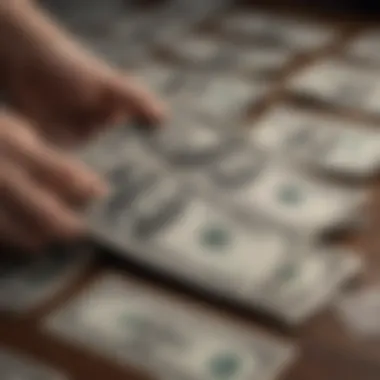
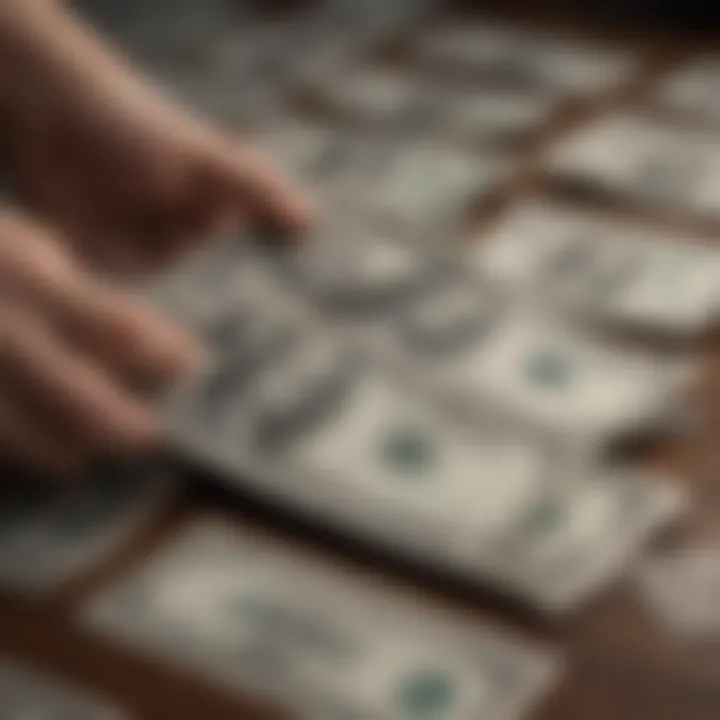
Utilizing Online Resources
Utilizing online resources, like dedicated currency collector websites or auction platforms, can provide a wealth of current information that guides you in evaluating your silver certificates. Many websites offer valuation tools, galleries of similar items, and price trends, enabling collectors to stay abreast of the shifting market dynamics.
The key characteristic of online resources is their accessibility—information is right at your fingertips, whether you’re sitting in your armchair or on your lunch break. Additionally, these platforms often feature community forums, where you can ask questions and connect with other investors or collectors with seasoned knowledge.
Yet, it’s vital to tread carefully. The sheer volume of information means there’s a risk of misinformation or biased perspectives, especially on social media platforms like facebook.com. This can make it difficult to discern fact from opinion. So, while online resources can be incredibly beneficial, balancing this with caution is the way to go.
Where to Buy and Sell
Moving on to the practicalities of buying and selling silver certificates, a diverse approach is recommended. Local coin shows and trade fairs provide a tactile experience and personal interaction with other collectors and dealers.
Alternatively, online auction sites also facilitate greater accessibility to a broader audience, allowing you to target serious buyers. However, remember to read the fine print concerning listing fees.
Investment Potential of Silver Certificates
The investment potential of silver certificate dollar bills isn’t just a passing fad—it's a robust area that marries the world of numismatics with financial strategy. As collectors and investors delve into this segment, they often realize that these unique notes could be more than mere historical curiosities. They represent tangible assets that can appreciate over time if evaluated correctly. The significance goes beyond nostalgia; it touches upon diversification, market trends, and even the economic sentiments surrounding precious metals.
Long-Term vs. Short-Term Investments
When considering silver certificates, investors often find themselves at a crossroads between long-term and short-term strategies.
- Long-Term Investments: For those who see the big picture, holding onto silver certificates may prove advantageous. The historical rise and fall in value can be tied to broader economic indicators, including inflation and silver prices. The trick here is to look at the certificates as long-haul investments. Over decades, many certificates, especially rarer varieties, have appreciated significantly, sometimes outpacing returns on more conventional investments.
- Short-Term Investments: On the flip side, some might venture into the realm of quick flips—buying silver certificates at lower prices and attempting to sell them at a higher rate in a short time frame. This approach requires a keen understanding of market trends, and while it can yield quick profits, it is inherently riskier. Many investors who dabble in short-term plays often end up caught in market fluctuations, showcasing that the thrill of the quick game is not without its pitfalls.
Ultimately, each approach carries its own risks and benefits. It becomes essential for investors to consider their personal goals, risk tolerance, and how much time they are willing to dedicate to monitoring the market.
Diversification Benefits
Integrating silver certificates into an investment portfolio presents an interesting opportunity for diversification. Here’s a closer look at how they contribute:
- Hedge Against Inflation: Silver has long been seen as a haven during times of economic unrest. When other investments falter, the intrinsic value tied to silver can offer a buffer. Adding silver certificates to an investment mix may help shield against inflationary trends, providing a metal-backed representation of value.
- Unique Asset Class: Silver certificates are not just a part of monetary history; they stand as a distinct collectible. This uniqueness means they often behave in ways that differ from conventional assets. Investors including them in their portfolios can enjoy a form of alternative investment that can withstand volatility in other sectors.
- Liquid Market: While not as liquid as stocks or bonds, silver certificates can be traded among collectors and investors, keeping them relevant in terms of liquidity. This aspect adds another layer of flexibility, accommodating both buyers and sellers.
Considering the many angles of investment potential is crucial. As interests in collectible currencies grow, silver certificates hold their ground as serious players in an investment landscape that desires both historical appreciation and financial upside.
"Investing in silver certificates transcends mere monetary value—it’s a venture into history, rarity, and potential wealth.“
In a nutshell, keeping an eye on the investment potential of silver certificates can only serve the keen financial enthusiast well, offering paths that are as varied as they are rewarding.
The End
In wrapping up the discussion surrounding silver certificate dollar bills, it’s essential to recognize why this topic holds significance not only for collectors but also for investors. The evaluation of these precious pieces of currency extends beyond mere monetary worth; it dives into historical relevance, market dynamics, and future potential.
Understanding the intricacies of silver certificates has its perks. For those captivated by the past, it offers a window into economic history, reflecting the shifts in American currency policies. Collectors can uncover the stories behind each bill, connecting with the economy of earlier times.
For investors, silver certificates present an avenue for diversification. With fluctuating markets, including stocks and bonds, having a tangible asset like silver certificates can help to mitigate risks. As the value of these notes can appreciate, particularly when they possess unique characteristics, they provide a safety net.
Moreover, being informed about market trends and demand can elevate one’s strategy. Just like knowing when to buy or sell stocks can create financial gains, possessing knowledge of the silver certificate industry can lead to profitable decisions.
Overall, assessing the worth of silver certificates does not merely involve checking their price but extends into appreciating their historical context, knowing current market situations, considering future prospects, and applying sound investment strategies. Silver certificates are more than just paper; they are artifacts of times past with the potential for future value.
Key Takeaways
- Silver certificates represent an important chapter in U.S. currency history and can be attractive collectibles.
- The evaluation process encompasses factors like condition, rarity, and demand, affecting marketability and pricing.
- Stay informed and engaged with current trends in both the collectible and investment spaces for maximum benefit.
- Understanding the nuances of the silver certificate market may allow both collectors and investors to make educated decisions that can lead to financial rewards.
Future Outlook
The outlook for silver certificate dollar bills appears promising. As more people delve into coin and currency collecting, there’s potentially an uptick in interest for these unique notes. With new collectors entering the market, the demand for silver certificates could rise, further enhancing their value.
Additionally, fluctuating economic conditions are likely to revive interest in tangible assets. As global uncertainties affect currencies, individuals may seek out silver certificates as a form of financial security. The historic nature of these notes can appeal to investors aiming to hedge against inflation or devaluation of contemporary money.
Moreover, the digital age presents opportunities for silver certificate enthusiasts, making it easier to connect through online marketplaces, forums, and social media. This can facilitate greater awareness about rare finds, valuation tactics, and upcoming trends, subsequently leading to enhanced market activities.
Ultimately, if collectors and investors can navigate the nuances of this fascinating segment of currency, they may find both historical richness and lucrative potential that silver certificates promise.



